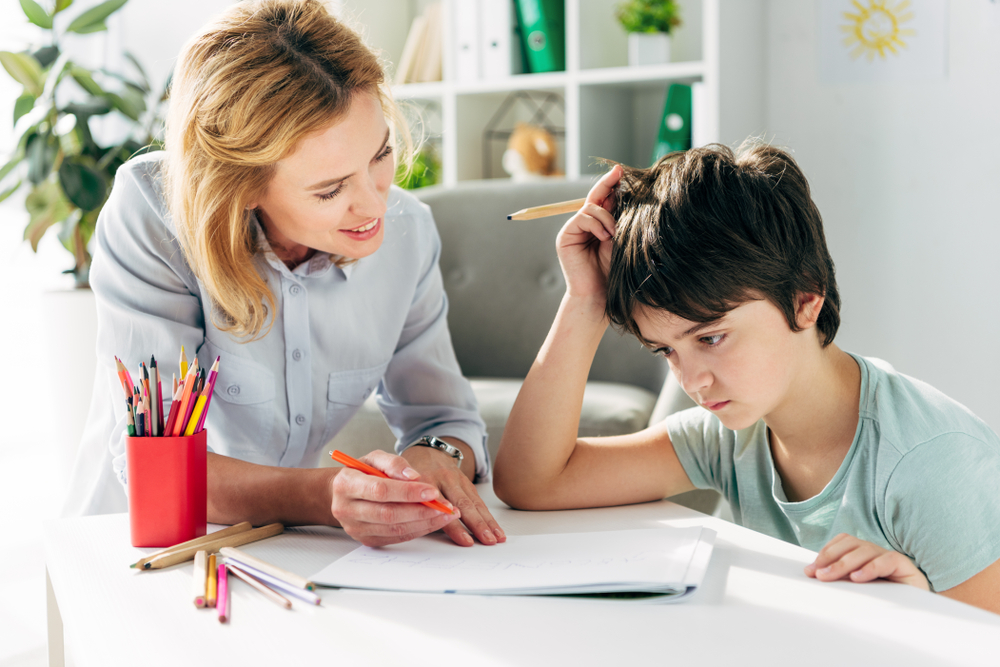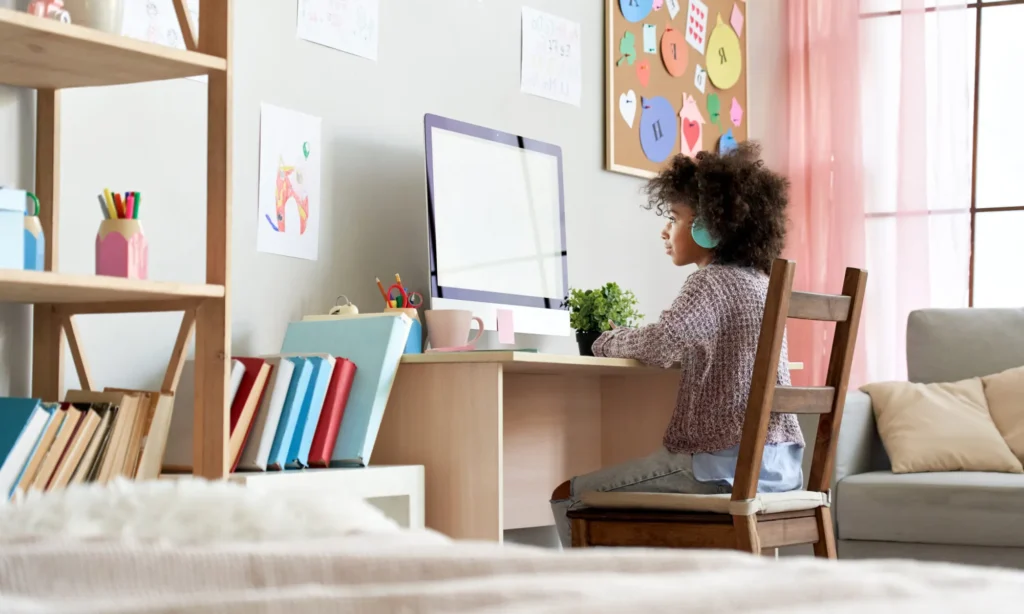- What is dyslexia?
- Around 15% of people across the world have dyslexia
- 10 Signs of dyslexia
- Tips for parents if they discovered that their child has dyslexia
- How to help kids with dyslexia?
Understanding dyslexia for some parents may be challenging. Especially if your kid was diagnosed with dyslexia, you might wonder how it will affect their education and if they they still achieve success at school and in adult life.
Many kids have dyslexia, which is NOT a disease, but a condition that could impact their learning experience. We’re here today to help you understand what dyslexia is, how to know and recognize the signs of dyslexia, and in which ways to support your dyslexic child. We’ll share some ideas on how to help students with dyslexia learn effectively and have fun!
With suitable teaching methods, attention and motivation, children with dyslexia can study fruitfully literally anything. We asked expert Adrienne Landry – the director of educational content at Novakid, to share her ideas on how to help a child with dyslexia to study without difficulties and enjoy the learning process. Find out our tips!
What is dyslexia?
Dyslexia is a learning disability that affects reading, writing and spelling skills. It is caused by a difference in the way the brain processes language, which makes it difficult for kids with dyslexia to accurately recognize and decode words.
Dyslexia is not related to intelligence, and people with dyslexia can have average or above-average intelligence. It is a neurological disorder that is often hereditary and can be diagnosed in children, adolescents, and adults. There is no cure for dyslexia, but with appropriate support of parents and the right teaching approach, students with dyslexia can learn to read and write effectively.
Our expert, Adrienne Landry says that dyslexia often results in kids having so-called compensatory skills. They are good at connecting ideas, are very creative and able to think outside the box!
Around 15% of people across the world have dyslexia
Dyslexia is a common learning disability. It affects around 15% of people across the world. In the UK only, according to the NHS, one in ten people are estimated to have dyslexia. Whilst more recent studies by the Made by Dyslexia charity showed this stat may be as high as one in five.
In the US over 40 million American adults are dyslexic, and only 2 million know it! Dyslexia in children and in adults, as you can see, is quite common.
Here’s an interesting fact to prove that dyslexia is not tied to IQ: Albert Einstein, one of the greatest and most influential physicists of all time, was dyslexic and had an estimated IQ of 160. Being dyslexic didn’t stop him from developing the theory of relativity, and making important contributions to the development of the theory of quantum mechanics.
What’s also interesting, is the fact that over 50% of NASA employees are dyslexic. People with dyslexia excel in areas of art, computer science, design, drama, electronics, math, mechanics, music, physics, sales, and sports.
Many famous people are dyslexic, including: Orlando Bloom, Whoopi Goldberg, Stephen Spielberg, Kiera Knightley and Patrick Dempsey.
What parents also need to know is that dyslexia runs in families. Dyslexic parents are very likely to have children with dyslexia. When it comes to gender statistics, as with most learning disabilities, dyslexia is more prevalent among males – but different scientific studies report different figures. At least two thirds of people with dyslexia are male.

10 Signs of dyslexia
It’s important to know the signs of dyslexia and learn how to recognize its symptoms when they occur. Many children may give their parents some warning signs for recognizing dyslexia. Usually, the problem starts in primary school during reading practice or is recognized by a teacher or a school psychologist.
The most common symptoms of dyslexia are:
- Difficulty with phonemic awareness and decoding words
- Struggles with spelling and writing
- Difficulty with reading – slow or inaccurate reading
- Poor reading comprehension
- Reversing letters or numbers
- Difficulty with writing and organizing thoughts
- Avoidance of reading and writing tasks
- Struggles with memory and attention
- Difficulty with word associations
- Trouble recognizing rhymes and making rhymes
- Trouble learning
ADHD might go hand in hand with dyslexia
Approximately 25-40% of children with dyslexia also suffer from Attention Deficit Hyperactivity Disorder (ADHD) and vice versa, around 25% of children with ADHD also tend to have dyslexia.
If you notice that your child is often restless, very talkative, easily gets angry or frustrated and finds it hard to concentrate, these all might be common symptoms of ADHD. They are typically noticeable before the age of six and occur in more than one situation, in home life and school life.
These symptoms can cause significant difficulties in a child’s life, such as underachievement at school, poor social interactions with other children and adults, and problems with discipline. That is why it’s so important to recognize the symptoms and seek qualified help as soon as possible.
Tips for parents if they discovered that their child has dyslexia
If your kid suffers from reading and spelling difficulties, instead of just introducing reading help, parents need to look for more comprehensive ways to assist. Kids may feel discouraged from learning and not have the right motivation, but thanks to the appropriate involvement of parents, this can be positively influenced.
- Nurture thinking skills – encouraging children with dyslexia to think critically and creatively, helps develop their problem-solving abilities and boosts their confidence. This can be done through activities such as brainstorming, discussion groups, or hands-on projects.
- Encourage independent learning – dyslexia diagnosed children should try to work independently and take responsibility for their own learning. It can help build their confidence and sense of self-worth. This can be done through activities such as setting achievable goals, using technology to support learning, and providing opportunities for them to demonstrate their skills and knowledge.
- Child-led teaching method – let dyslexic students teach what they have learned to others, because it can help reinforce their understanding and build their confidence. Try activities such as giving presentations, creating educational materials, or leading group discussions.
- Break down material into smaller parts – it helps to better understand and remember the information. Activities such as summarizing information, creating visual aids, or breaking down texts into smaller sections would be great.
- Reword your child – positive reinforcement can help children with dyslexia build their confidence and feel good about their achievements. Acknowledging their efforts, pointing out their strengths, and celebrating their successes with extra family activities is the way to go.
- Help build a positive image – helping children with dyslexia develop a positive self-image by emphasizing their strengths and abilities can boost their confidence and enable them to overcome challenges.
- Ensure your kid gets enough sleep – it can help them focus and concentrate better during the day, which is important for learning and retaining information. Establish a regular sleep schedule and ontroduce a relaxing bedtime routine.
How to help kids with dyslexia?
Below we present some activities to help kids with dyslexia at school. This specific learning disorder requires your extra attention and a special teaching approach, but with some effort kids with dyslexia may feel more secure in terms of reading, spelling, and writing correctly.
Audiobooks
If a dyslexic child reads with difficulty and doesn’t enjoy the process, listening to audiobooks might pique their interest. At the same time, such activities help to expand their vocabulary and improve their listening comprehension. This way, a child not only knows a lot of words, but also learns to decipher new words much quicker, even with the difficulties encountered.
Music
Aesthetic orientation and creativity are often noted among common personality traits of dyslexic children. Their ability to think in images is a real value in the world of art and greatly contributes to success in this field, compensating for some perceived “failures” in traditional school education.
At the same time, music lessons not only highlight the child’s strengths, but also contribute to the development of phonemic hearing. A number of studies have confirmed that processing of speech and music takes place in the same areas of the brain. These areas are responsible for the mechanics of speech, the search for correspondence between sounds, symbols and their complex combinations.
During English online lessons at Novakid, teachers use the Reading Through Phonics method. It helps dyslexic students to match the sound with the letter. At the first stage, kids learn the main sounds separately. During the second stage, they learn to differentiate between sounds in words and read separate words, and only then they learn reading phrases, sentences, and texts.
As our expert Adrienne Landry says: “Thanks to this method, Novakid students are able to read even unfamiliar words in the future!”.
Drawing
A dyslexic child can put a great effort into reading a chapter from a textbook several times, and not remember a single fact afterwards. But should they pick up a pencil and draw words and sentences or even comics and then try to retell the whole story, the information becomes quite accessible.
Adrienne Landry adds that a child’s associative thinking is involved 100% of the time. It helps quickly memorize the material they have learned and remember it for a very long time.
It’s recommended to use pencils, crayons and felt-tip pens when preparing homework. While the child is drawing or making crafts, creating some kind of images related to the subject of the study, they understand and remember the material better.
Communication-based learning activities
It can be said that the interpreter-free communicative method of teaching foreign languages with native speakers is preferable for all children, including those with cognitive specifics like dyslexia.
“Mimicry, gestures, pictures will help a student and a teacher to understand each other. Such untranslated English will be better memorized subconsciously. However, trying to read unfamiliar words in printed or electronic form will only cause a headache for a child and can provoke a loss of interest in further studies”, commented Adrienne Landry.
Sign up your dyslexic kid to a free demo English lesson with Novakid! It’s a great idea to try something fresh. See how Novakid teachers approach students who have trouble with reading and conduct lessons in a fun and stress-free way using gamification, songs, and the Total Physical Response method.
Thanks to the 1:1 approach, a child‘s teacher can focus 100% of their attention on a student, and the ones with specific learning disabilities will benefit the most from such an approach.
Always seek support
Talk to your child’s teacher, a reading specialist, or a tutor for additional help and support. Encourage your child to join a dyslexia support group for additional resources and support. Peer support groups are safe spaces where people can open up about their struggles and even share their strengths and helpful resources with others.
Check for the local dyslexia association in your neighborhood. Knowing that your child is not the only one at school with reading difficulties and that other parents know about dyslexia too will be encouraging.
Did you like the article?
We hope that the information provided in this article was helpful. Reach out to us if you have any more questions regarding dyslexia, causes of dyslexia, or think your child might suffer from it. Trouble learning to read and struggling in school is not the end of the world. With appropriate help you can evaluate and diagnose your kid and help them achieve success in the future. Our experts are here to help!









































